Abstract
One hundred and two patients with anisohypermetropic amblyopia without strabismus were studied. Microstrabismus was excluded by detailed orthoptic examinations including visuscopy and Cüppers' bifoveal correspondence test. Treatment consisted in wearing correcting glasses and part-time or full-time patching of the nonamblyopic eye. In patients with dense amblyopia patching of the amblyopic eye was done and Cüppers' after-image method of pleoptic therapy was instituted as the initial procedure. When visual acuity improved sufficiently by this therapy, patching was used on the nonamblyopic eye. Sixty-five (63.7%) patients showed 2 lines or more improvement on the Snellen chart. Though young children (6 to 12 years) improved their visual acuity more often than those aged 13 to 20 years, a considerable number of patients (50.0%) in the older age group improved their visual acuity after therapy. The improvement in visual acuity was accompanied by improved stereoacuity in 49.0% of the patients. It is therefore suggested that every effort should be made to treat these patients even after the age of 12 years.
Full text
PDF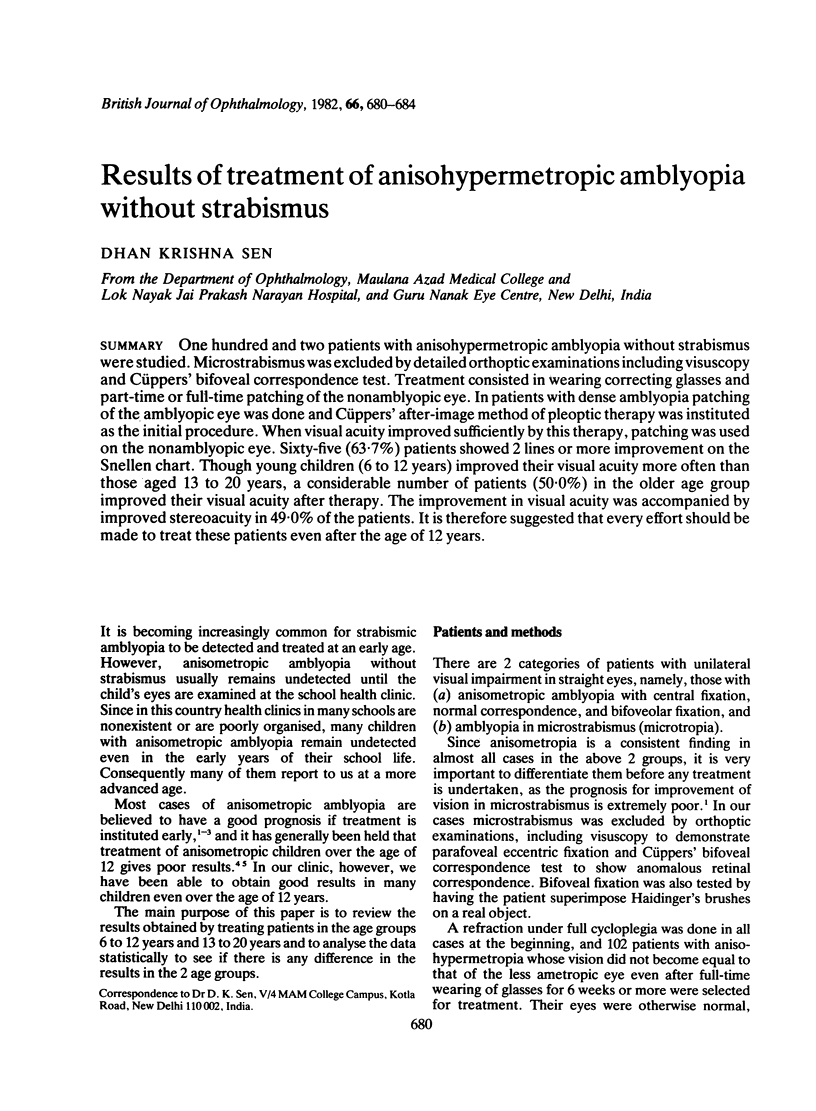
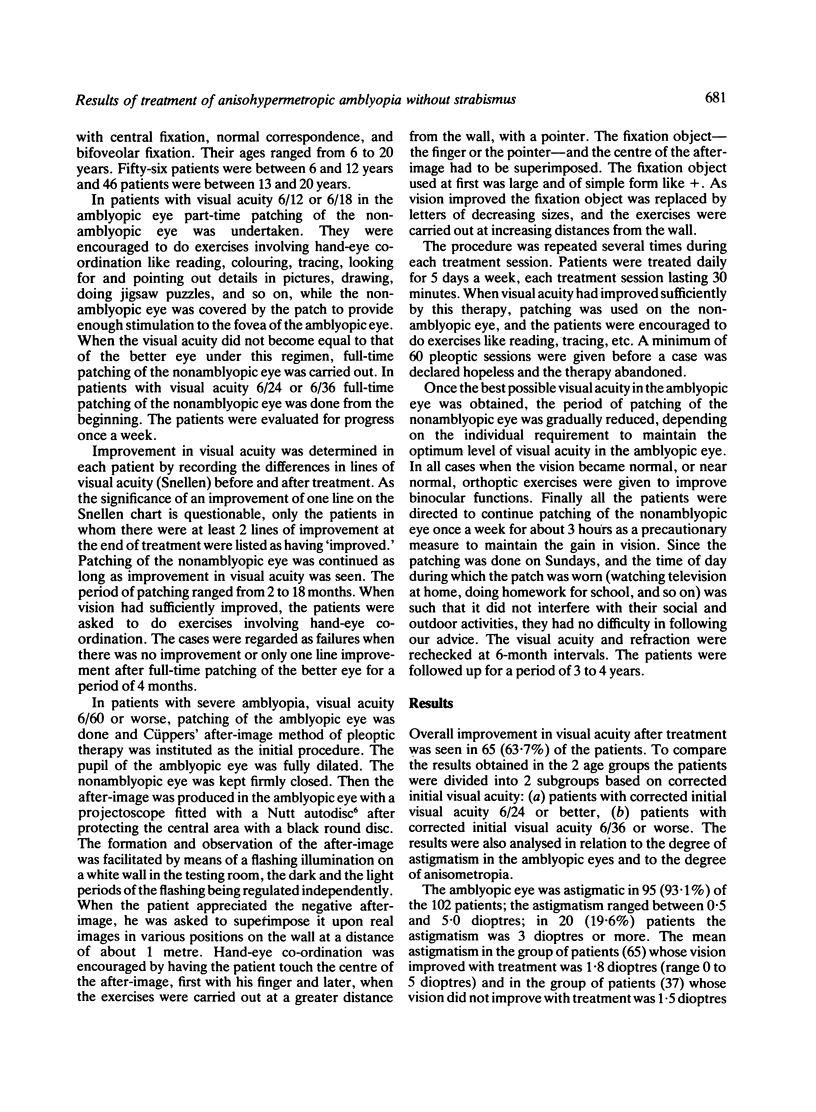
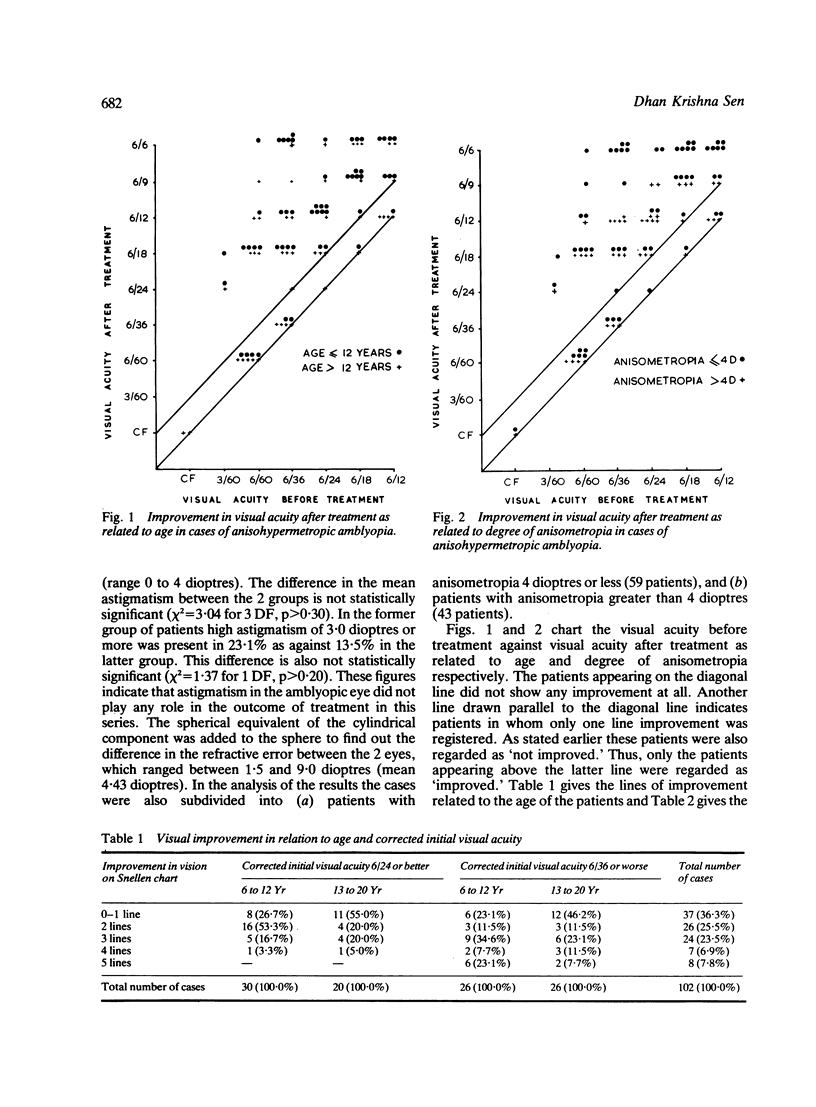
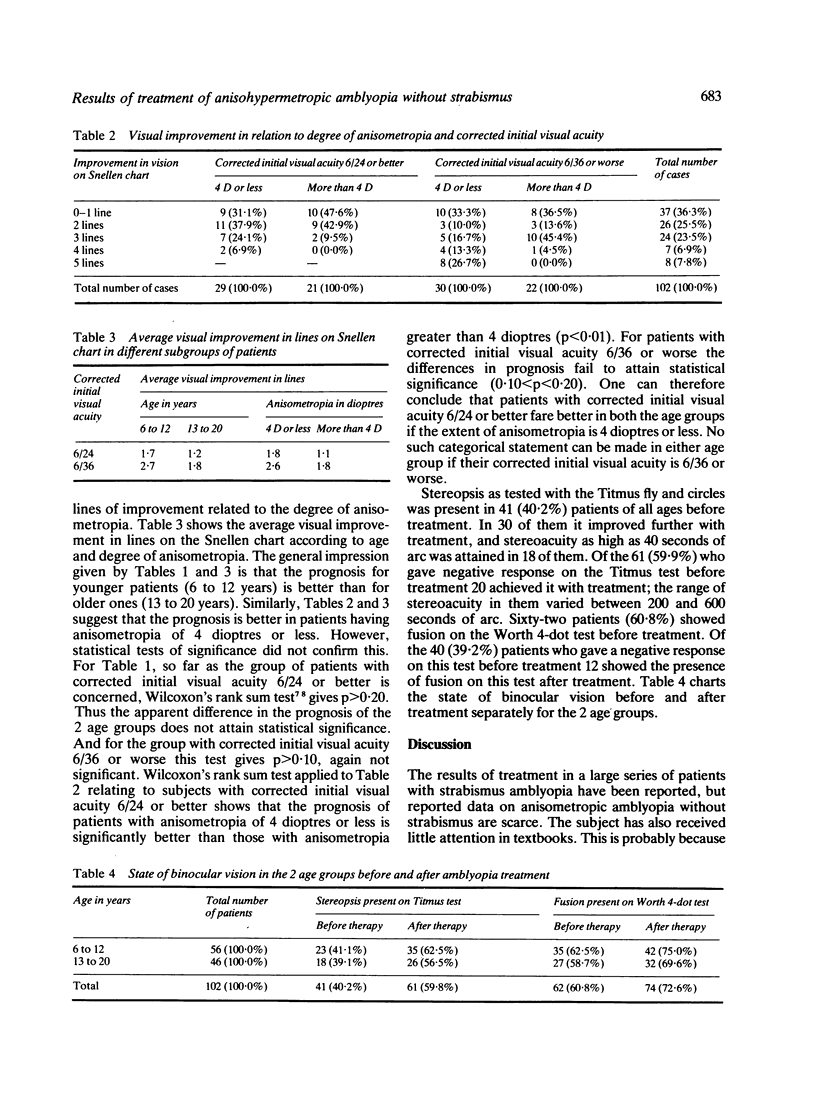
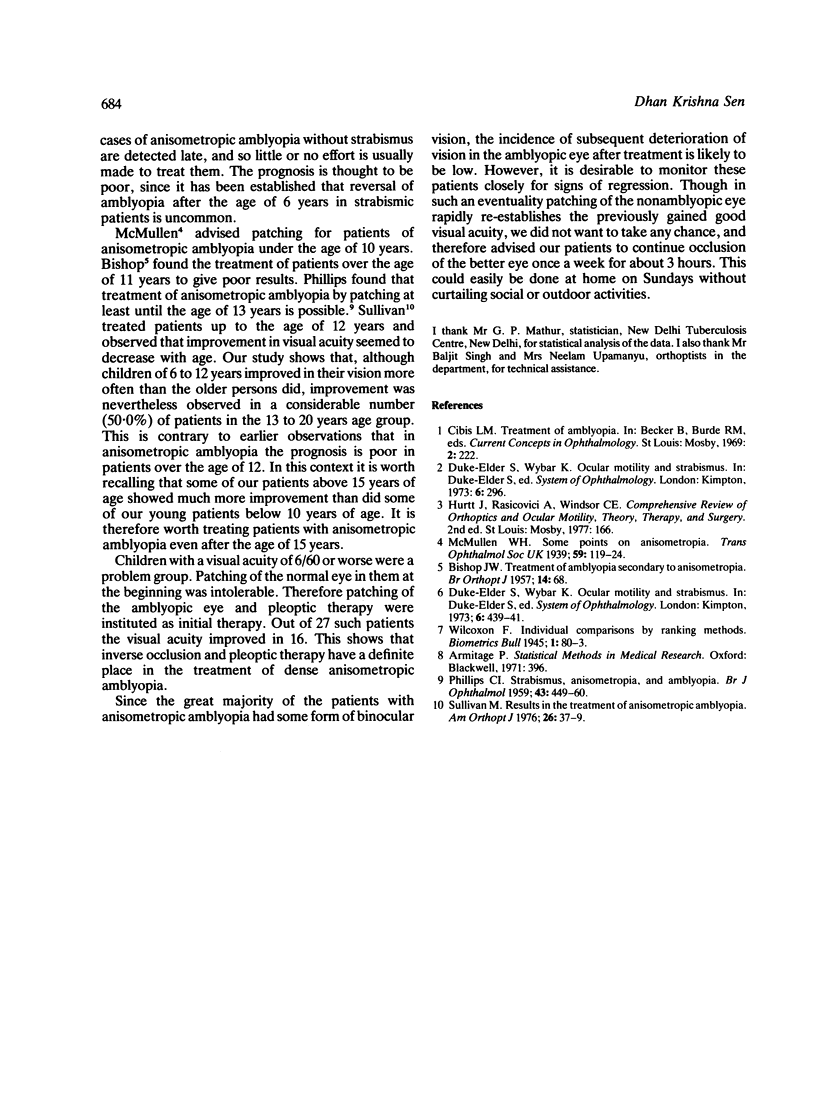
Selected References
These references are in PubMed. This may not be the complete list of references from this article.
- PHILLIPS C. I. Strabismus, anisometropia, and amblyopia. Br J Ophthalmol. 1959 Aug;43:449–460. doi: 10.1136/bjo.43.8.449. [DOI] [PMC free article] [PubMed] [Google Scholar]
- Sullivan M. Results in the treatment of anisometropic amblyopia. Am Orthopt J. 1976;26:37–42. [PubMed] [Google Scholar]


